Over the last seven years, I’ve used almost every Hyperlite Mountain Gear backpack, every size, and every fabric option. Through also testing approximately 20 other competing hiking and climbing packs, I’ve found that the best all-purpose ultralight backpack available today is the:
Hyperlite Moutain Gear Porter with Stuff Pocket 31-42 ounces, $300-$420
Click here to see this pack on Hyperlite's website.
This is a mega review for Hyperlite's Porter, Windrider, Southwest, and Ice Pack. All of these models are available in four sizes (2400, 3400, 4400, and 5400 cubic inches) and three fabrics (50-denier Dyneema Composite Fabric/Polyester Hybrid, 150-denier Hybrid, and nearly-indestructible woven Dyneema).
This review aims to help you find the best ultralight pack for your needs. It may not be a Hyperlite pack. If it is, I hope you close this page feeling 100% confident you’re choosing the model that’s best for your needs.
This review aims to help you find the best ultralight pack for your needs. It may not be a Hyperlite pack. If it is, I hope you close this page feeling 100% confident you’re choosing the model that’s best for your needs.
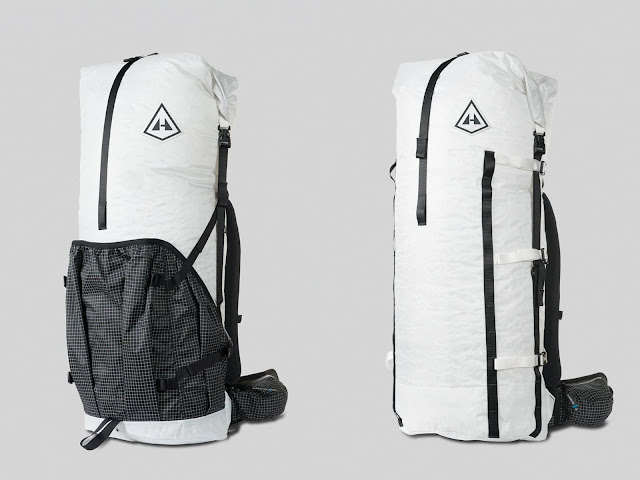 |
| My two favorite Hyperlite Mountain Gear backpacks: Southwest (left) and Porter. |
Here are key Hyperlite-relevant results from my experience testing all types of backpacks:
1. Except for alpinism, crazy light trips, and crazy heavy trips, I've found that Hyperlite backpacks strike an ideal balance between weight, comfort, features, versatility, and durability.
2. A great pack will be as comfortable and as light as possible. The best value pack will also be versatile and durable. This is why Hyperlite packs excel. They perform at a very high level for a variety of activities and last a long time.
3. My favorite models are the Porter and the Southwest.
4. To maximize versatility, I recommend either the 3400 or 4400 cubic inch size.
5. I recommend the 150-denier Dyneema/Polyester hybrid fabric for long-term durability.
I love Hyperlite packs because they are light enough for very challenging trips, tough enough for long-term use, and versatile for a wide range of applications. Including weekend trips with friends, dogs, beer and a roaring fire. Overall, I have found them to be fantastic backpacks.
First, a disclosure
I prefer durable and versatile products because they are a better value and have less of an impact on the environment.
The only Hyperlite pack I have not used is the Daybreak. My experience with Hyperlite products comes partly from when I helped to test them for OutdoorGearLab, between 2010-2014. I reviewed Hyperlite's ultralight shelters and contributed to pack testing. This is the only review I've written on Hyperlite packs.
Hyperlite did not send any packs for this review. I got them all for free in exchange for photos, blog posts, and feedback on their products. Many people would testify to the fact that I’m not biased toward Hyperlite products. I feel that many have yet to mature. I use a few of their packs because those models work well for me. I have parted ways with the models that didn't perform well or weren't a good fit for my needs.
Hyperlite did not send any packs for this review. I got them all for free in exchange for photos, blog posts, and feedback on their products. Many people would testify to the fact that I’m not biased toward Hyperlite products. I feel that many have yet to mature. I use a few of their packs because those models work well for me. I have parted ways with the models that didn't perform well or weren't a good fit for my needs.
What’s the Best Ultralight Backpack?
I believe the best ultralight backpack is a Hyperlite Windrider, Southwest, Porter, or Ice Pack for everything EXCEPT:
Crazy Light Hiking. If your load weighs less than 25 lb. and can fit into a small pack, I’ve found that frameless packs like the ZPacks Nero, Mountain Laurel Designs Burn, and Katabatic Gear Knick can perform better than Hyperlite 2400-4400 models because they weigh only 11-18 oz. However, they are neither versatile nor durable and you need to have excellent ultralight skills and all of the best light gear in order to use them. In other words, you also need an all-purpose backpack. See the Weight section below for my take on this type of pack.
Alpinism. If you’re climbing a route that is mostly rock climbing or hard ice climbing, you’re better off with a CiloGear pack. If you have done your research you’ll see some good reviews for the Arcteryx Alpha FL. This is a great pack, but it’s not as good as the CiloGear 30L or 30:30. In summer 2013, Chris Simrell and I toured Arcteryx’s North Vancouver factory and design studios and met with the Alpha FL pack designer. We also climbed Mt. Huntington’s Harvard route with Alpha FL 45L. CiloGear packs are the best for climbing because they have a variety of features that pull the load very close to your body. They are also more durable and more versatile than any other climbing pack. The main drawback to Cilo packs is they are not as comfortable for hiking as Hyperlite packs. Chris and I co-own the woven-Dyneema 30:30 Worksack ($575), which is the largest pack I recommend from CiloGear. (I’ve also used the 45L and 60L.) The Ice Pack, like any Hyperlite pack, is excellent for types of climbing that are mostly walking (mountaineering) and skiing. For example, the standard routes on Denali and Everest. See below for a detailed discussion of the Ice Pack.
Crazy Heavy Loads. I don't like to carry more than 50 lb. in Hyperlite’s 4400 cubic inch packs. That limit is lower, perhaps 40 lb., for the 3400 size. Ambassador Luc Mehl, who normally uses a 4400 size pack, told me, “I'd start seriously considering my pack options that have beefier frames somewhere around 65 lb. I'm more of a shoulder than a hip carrier so I might get away with more weight in HMG than other folks are comfortable with.”
Lowest Cost. Hyperlite packs cost a lot because they use premium US-made fabrics and labor in the US is expensive. Consider Hyperlite if you’re after the highest performance product.
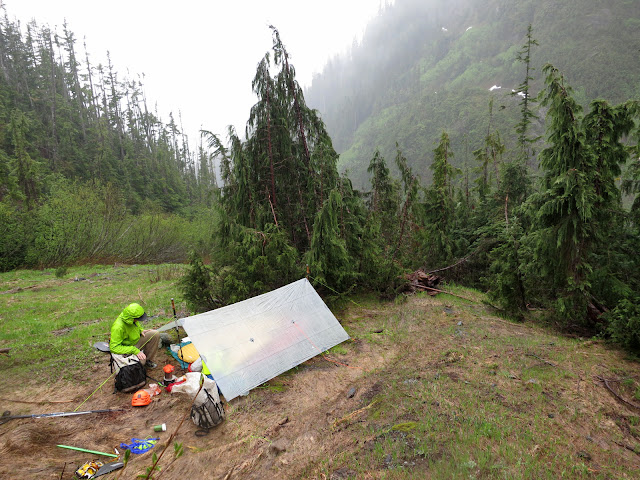 |
| Chris and I used the 2400 Southwest and 3400 Porter for our first hike-packraft traverse of Washington's Olympic Peninsula. 2013. |
Three Packs for Everything
A person needs up to three packs for everything. If I had three packs for everything, I’d choose:
1. CiloGear 30L Worksack — incredibly versatile, durable, and comfortable
2. Hyperlite 4400 Porter + Stuff Pocket — brilliant for all things hiking, skiing, packrafting, and mountaineering
3. Seek Outside Unaweep 6300 — carrying more than 40 lb. for the majority of the trip
Now, I’ll discuss how each Hyperlite pack performs, relative to the competition, in key areas: versatility, comfort, durability, and weight.
Performance Evaluation
Versatility
Capacity
The main thing that influences versatility is a pack’s capacity. We all use backpacks for a variety of purposes and our interests and activities change over time. Don’t make the mistake of getting one that’s too small.
I don’t think it’s worth buying the 2400 size because: (1) If you want to go really lightweight, get a frameless pack like the CiloGear 30L Worksack (most versatile and durable) or, the ZPacks Nero, MLD Burn, or Katabatic Gear Knick (best for hiking); (2) The only difference between the 2400 and 3400 is the height of the pack. The extra capacity adds about four ounces. Given that you’ll own the pack for many years and use it for a variety of purposes, I think the weight-versatility tradeoff is absolutely worth it. For this reason, I no longer own any Hyperlite packs in the 2400 size.
Here’s what I think each size is best for:
2400 cubic inches
Summer backpacking. This size can work for 7-14 day three-season trips if you have all of the best ultralight gear (a flat tarp, two-person down quilt, etc.), or if your partners(s) have larger packs to carry the bulky things. It can also be used for short winter trips if you have the most compact gear. The photo below shows me with the 2400 Ice Pack in 2011 on a three-day ski-to-climb trip where I carried the minuscule Feathered Friends Vireo sleeping bag and no group cooking or camping gear. The other photo is of Chris on our first Olympic Peninsula hike-packraft traverse in 2012. He was able to use a 2400 because I had a 3400 and carried our two-person packraft.
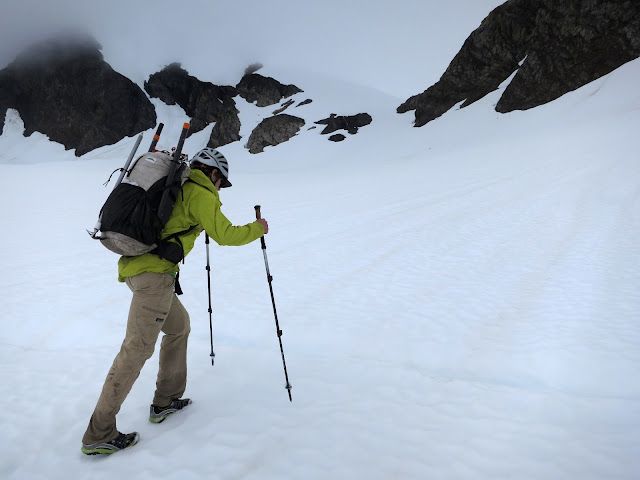 |
| Chris leading the charge up the final pass on Mt. Olympus with the Hyperlite Mountain Gear 2400 Southwest pack. Olympic Peninsula, Washington. 2013. |
3400 cubic inches
This size is ideal for backpacking, lightweight packrafting, and lightweight winter trips. It’s great for people who have already invested in a compact shelter, sleeping bag, and know how to leave the unnecessary things behind.
I’ve used the 3400 for a bunch of trips where we carried a two-person packraft and related gear. I used it on Denali’s West Buttress to haul 65 lb. loads and pull a sled by looping some cord or webbing through the Ice Pack’s hip belt slot. I then switched, for Cassin Ridge, to the ZPacks Zero (8 oz.) that was better for low-abrasion high-altitude climbing. Zeb used a NWD CiloGear 45L Worksack both for the load hauling and the route. I was only able to use the Zero because I carried the compact heavy things, such as three 16 oz fuel canisters and our tent, and he carried the bulky items.
Roman Dial used the 3400 Windrider for a weeklong cold-weather packrafting trip in the Arctic this summer. There wasn’t much brush so he strapped the boat on top of his pack. Using this size pack is very rare for whitewater packrafting in general and especially in Alaska.
Sarah used her size small 3400 Windrider for our 525-mile North With You trip, but that only worked because we had an ultralight packraft, very little other gear (no drysuits, for example), and I had a size large 4400 Windrider to carry the boat.
To summarize, in order to make the 3400 work for packrafting and most other multi-sport trips you need to take both very light gear and very little gear.
 |
| We tried to do a 150-mile "ridge traverse" of Capitol Reef National Park, but we got butts kicked. This is incredible country. Hyperlite Mountain Gear 3400 Southwest pack. 2016. |
4400 cubic inches
This size is ideal for multi-sport trips, lengthy unsupported trips, and for winter trips. The diameter is larger than the 3400, all 4400 models are built with a burlier 150-denier polyester face fabric, and they have a slightly more robust frame sheet for carrying heavier loads.
As I mentioned above, if I were to have one Hyperlite pack, I’d choose the 4400 Porter with a Stuff Pocket. This is also the pack of choice for super gear guru Ryan Jordan, founder of BackpackingLight. He began his description of the Porter by saying,
5400 cubic inches
"Some ultralight backpackers have developed an unquenchable fetish for packs that are measured in ounces, seemingly with no regard at all to what the pack has offered with respect to durability, comfort, or aesthetic design."
Haley Johnston, a prodigious Alaska backpacker and packrafting guide, uses the 4400 Porter as her go-to pack and has pushed its limits on several expeditions. She let me share two photos of an unsupported two-week trip in the Arctic Refuge and a 25-day unsupported trip in Canada's Northwest Territories. She says,
"I can also personally attest to the fact that 80# is too much to wear that pack comfortably. But it didn't explode or fail in any way at that weight either."
 |
| Haley Johnston's 4400 Porter pack loaded with two weeks of food and packrafting gear. Note how she used the Alpacka Bow Bag for external storage! Arctic Refuge, Alaska. Photo: Haley Johnston. |
 |
| Haley Johnston carrying 80 lb of food, dog food, and packrafting gear with the 4400 Porter. Northwest Territories, Canada. Photo: Malcom Herstand. |
5400 cubic inches
Sometimes, with packrafting gear and/or bulky winter gear, the 4400 isn’t big enough!
The 4400 was just barely big enough for North With You. It was not big enough for a 2016 climbing-skiing-packrafting trip in the Alaska Range, where I had to attach too many things to the outside. See the photo below. Another example is when I attempted a ski mountaineering traverse of Mt. Logan (19,551 ft.) via its East Ridge (13,000 ft., easy ice and rock climbing). We had eight days of food, ten days of fuel (six ounces of white gas per person per day), -25 degree sleeping bags, and clothing for extreme cold—so much stuff that had to strap a 10-liter stuff sack to the top of my 4400 Ice Pack for the first two days up the ridge.
Hyperlite has been testing a 5400 cubic inch pack for a year and a half and will build one to order if you're interested. I have not used this pack, but I've talked to two Ambassadors and Mike about it. The 5400 was inspired by Alaska packrafting, where you carry a lot of bulky gear for paddling cold rivers in cold weather, and it’s best if the gear goes inside your pack. The 5400 could also be great for winter trips with huge down sleeping bags and parkas. Its frame is slightly more robust than the 4400, but both packs have the same weight limit. You should have enough experience to know that you need the 5400 size and won't fill it with more than about 60 lb.
The 4400 was just barely big enough for North With You. It was not big enough for a 2016 climbing-skiing-packrafting trip in the Alaska Range, where I had to attach too many things to the outside. See the photo below. Another example is when I attempted a ski mountaineering traverse of Mt. Logan (19,551 ft.) via its East Ridge (13,000 ft., easy ice and rock climbing). We had eight days of food, ten days of fuel (six ounces of white gas per person per day), -25 degree sleeping bags, and clothing for extreme cold—so much stuff that had to strap a 10-liter stuff sack to the top of my 4400 Ice Pack for the first two days up the ridge.
Hyperlite has been testing a 5400 cubic inch pack for a year and a half and will build one to order if you're interested. I have not used this pack, but I've talked to two Ambassadors and Mike about it. The 5400 was inspired by Alaska packrafting, where you carry a lot of bulky gear for paddling cold rivers in cold weather, and it’s best if the gear goes inside your pack. The 5400 could also be great for winter trips with huge down sleeping bags and parkas. Its frame is slightly more robust than the 4400, but both packs have the same weight limit. You should have enough experience to know that you need the 5400 size and won't fill it with more than about 60 lb.
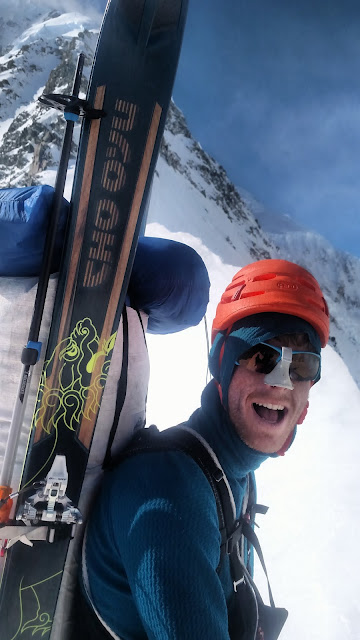 |
| Climbing Mt. Logan's East Ridge with an overloaded Hyperlite Mountain Gear 4400 Ice Pack. 2017. |
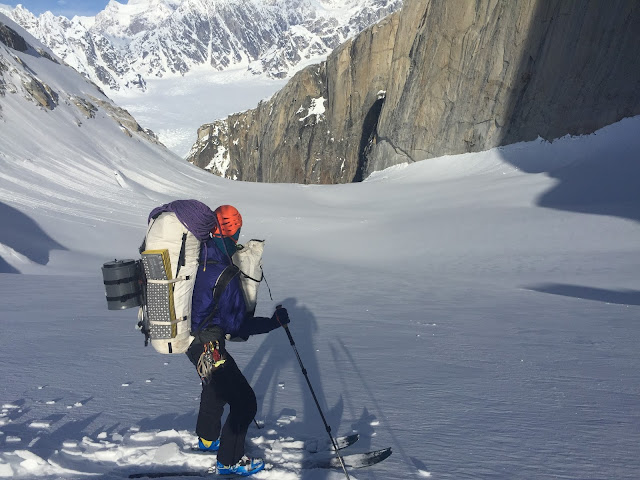 |
| Trying to ski down Moose's Tooth with about 70 pounds of gear. Hyperlite Moutain Gear 4400 Ice Pack. Alaska Range. 2016. |
Features
After capacity, the next greatest attribute that affects a pack’s versatility is its features. All Hyperlite packs have the same body. In order to maximize or minimize versatility, you can choose which features (pockets, straps, etc.) best suit your needs. Here’s my take on the various models:
Hyperlite Mountain Gear Porter Features
The Porter is my favorite Hyperlite pack. In addition to being the most versatile, its features are the most refined. This pack is getting close to perfect.
The Porter has three side straps that work well for compression purposes and also for attaching skis, poles, moose antlers, wands, snow pickets, Clean Mountain Cans, ropes, etc. The straps are made with a durable material that can handle abrasion and resist sharp edges. (The side straps on the Windrider and Southwest are thin grosgrain—for hiking only—and aren’t positioned well for attaching lots of things to the pack.)
Four daisy chains run the length of the body and can be used for lashing things to the pack and/or the pack to other things (packraft, truck, yak, etc.). Hyperlite sells the four ounce Porter Stuff Pocket, which attaches to the front daisies. If you opt for the Porter, I recommend getting the Stuff Pocket. It’s really nice to have quick access to a rain shell, food, water, etc. On rare occasions, I’ll take the pocket off to save weight.
The Porter’s main disadvantage for backpacking is its lack of side pockets. You can’t pull water, maps, bear spray, etc. from a pocket while on the move. The hip belt pockets mitigate this to some extent. I put food, sunscreen, lip balm, and my phone in those pockets and stop every 45 to 60 minutes to drink water, which is either inside the pack or in the Stuff Pocket. For the last few years, I’ve been using a ZPacks shoulder pouch that stores my camera or more food. When I carry bear spray with the Porter I tie some thin cord around the neck of the canister and clip it to the bottom of my shoulder strap with a small carabiner. The canister hangs down to my side, doesn’t bang around much, and is easy to access if needed.
If you don’t envision a need for strapping much to the outside of your pack, you’re probably better off with the Southwest. The Southwest is also slightly lighter than the Porter, (less than an ounce or up to five ounces if you add the Porter Stuff Pocket), but I encourage you to prioritize versatility more than weight savings when choosing between these models.
Though it may already be obvious, let me explicitly say that the Porter is the best pack for backcountry skiing and any type of multi-day ski trip. The three side straps are great for attaching skis. The Porter is the pack of choice for summer and winter Alaska Wilderness Classic races.
For an extra $100 Hyperlite can build your Porter pack with a woven Dyneema bottom, side panels, and ski holsters. This could be a good choice if you do a lot of steep skiing and don’t use an avalanche airbag pack.
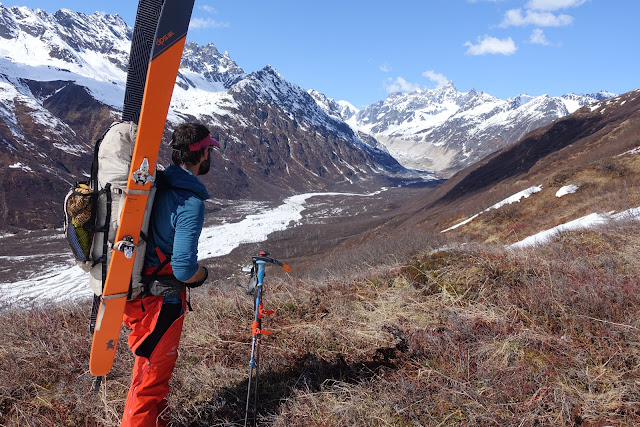 |
| Dan Sandberg enjoying the view of the valley we descended. The Porter pack's three side straps are great for skis and the optional Stuff Pocket keeps essentials handy. Alaska Range. 2017. |
What I’d change on the Porter
I want the Porter pack's three side straps to be about six inches longer so I can attach bulky items like a packraft or a closed cell sleeping pad. If you expect to need to strap a lot of things to the pack, it can be worth bringing webbing adjustment straps. Sea to Summit makes an excellent lightweight model (less than 2 oz. and $10) with a durable metal locking mechanism.
One thing that I cut off my Hyperlite packs is the elastic strap that “cushions” the sternum strap. I find that I can pull the shoulder straps tighter when this a removed, and that helps to keep the load in closer to my body for climbing and technical hiking.
Hyperlite Mountain Gear Southwest Features
Pockets
The only difference between the Southwest and Windrider is the pocket material. Both packs have two external side pockets and one external front pocket. The Southwest uses a 210-denier nylon reinforced with Dyneema “gridstop” and a waterproof polyurethane coating. This is a common fabric for backpacks because it’s durable and not too expensive. I’ve found it to be an excellent choice for external pockets because it’s significantly tougher than the pack body fabric (both the 50-denier and 150-denier). The only drawback to this fabric is the PU coating will wear off over a long period of time. Fabrics with a PET laminate, such as X-PAC are more durably waterproof. But this doesn’t matter because the Southwest’s pockets are external—their contents will get wet in the rain and therefore the fabric doesn’t need to be waterproof.
Pocket Design
Brandon Lampley, in his January 2016 OutdoorGearLab review, criticized how Hyperlite side pockets fail to allow both compression and access to the contents. He recommended the pack have two holes to allow the strap to pass through the inside of the pocket or the outside so you can compress the pack while also snagging a water bottle while walking. Other manufacturers like Granite Gear and Osprey do this. I agree it would be a nice change.
Another potential improvement is to make the side pockets easier to access while walking. Their high opening makes it relatively hard to put things back inside while wearing the pack. The advantage of having them in this position, a couple inches above the pack's bottom, is durability. They don't hit the ground each time you set the pack down. My favorite side pockets are the colossal ones on the Seek Outside Unaweep 6300. These are very wide, deep, and have an adjustable elastic cord that allows you to have them loose or cinched tight--and you can adjust the cord while walking. The Unaweep's design is more complex than Hyperlite's and likely also more expensive to build. Durability versus effortless side pocket access—it's a tough tradeoff.
Pocket Durability
If you use it long and hard, the Southwest’s pocket fabric will eventually develop small tears on the front side, where bush and rocks tend to smash it. This abrasion is to be expected and is easy to repair in the field. In their current elevated position, I don’t think Hyperlite should switch to a more durable fabric. See the Warranty and Repair section below for my preferred field repair method.
Trying to stay warm while hiking in the Arctic. Note the high position of the side pockets. Hyperlite Mountain Gear 4400 Southwest. 2015. |
How I modified my 4400 Southwest pack
I make a handful of small modifications to the Southwest. The same would apply to the Windrider if I used it. These are:
· Permanently close the hydration port. Hyperlite added a hydration port on the side of the pack. I don’t use hydration bladders because they are heavy, break easy, and are a pain to refill. I close the hydration port by cutting the velcro off and gluing the overlap shut with Seam Grip. This is a permanent, waterproof fix.
· I cut the ice axe loop off my 4400 Southwest. This may not be a good choice for you. Here’s my rationale if you’re interested: This feature is intended for traditional mountaineering axes for crossing steep snowfields. In order to attach a tool, you need to add your own closure system (3mm elastic cord or static cord and a cordlock) to the webbing loop on the top strap closure. Get these at your local gear store for less than $5 or from ripstopbytheroll.com. When you have an ice tool attached here it prevents you from fully filling the front pocket. That’s annoying, but not a big deal. It would be more functional if the ice tool loop were off to the side so the tool’s shaft fell in the gap between the side and front pockets. I choose to remove the ice tool loop because it does not increase the pack’s function for me, with my 4400 Southwest. I store my mountain axe inside my pack with a plastic tip and adze protector until I need it. If I cross the snowfield and expect to need the tool again soon, I’ll stash it between my shoulder and the shoulder strap with the pick facing backward. After scrambling across the rock or scree to the next snowfield, I’ll pull the ice tool out from behind my shoulder. I’ll then put the tool back inside my pack when I no longer need it. I much prefer keeping the axe inside my pack because it doesn’t get caught in the brush, doesn’t bang around, and I know I won’t lose it. Even two technical ice tools fit well inside a 4400 pack. I don’t recommend cutting the ice axe loop off the 2400 or 3400 size packs.
· I also cut off the four plastic square pieces that surround the front pocket. I believe these are intended to prolong the life of the grosgrain loops when you lash things through the plastic hardware (less friction on the loop). Though they barely weigh anything, I never found a use for them during my first four years with Southwest packs so I cut it off when I got my 4400 Southwest in 2015.
The above modifications are trivial in the big picture. They make me happy because my pack is more aesthetically pleasing and more functional for me.
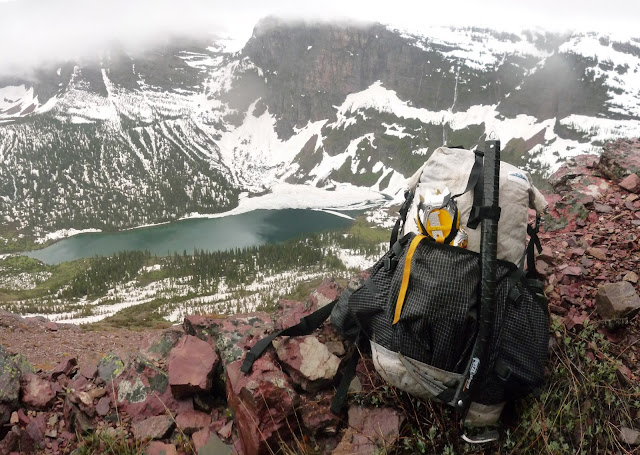 |
| A closer look at the Southwest/Windrider ice tool attachment system. Glacier National Park. 2012. |
 |
| Carrying a technical ice tool with the Hyperlite Mountain Gear 3400 Southwest. Alaska. 2016. |
Hyperlite Mountain Gear Windrider Features
I prefer the Southwest over the Windrider because the Windrider’s mesh offers only one advantage: minuscule time savings. You can see exactly where your items are, which saves a few seconds when reaching for them. This benefit is offset by the mesh’s significant limitations:
· The pocket contents can get covered with dirt, mud, sand, snow, etc., when the pack falls over or when you set it down on its side.
· The Southwest’s solid pocket fabric protects the pockets’ contents from abrasion. For example, if you have an ultralight $450 rain jacket, you can put it a pocket and walk through dense brush without worrying it will get torn up. This is a big advantage.
· Large holes in the mesh can catch on the brush, which is annoying at best and tearing at worst.
· A solid fabric is far easier to repair in the field.
· The mesh offers no significant weight savings.
Hyperlite Mountain Gear Ice Pack Features
I’ve used this pack in three sizes and three fabrics and find it to be ideal for long approaches or general mountaineering when you want to attach ice tools to the front of the exterior. As I mentioned above, a pack designed specifically for on-route climbing carries better and has superior features than the Ice Pack. For example, the Ice Pack is not tough enough for serious alpine rock routes unless you get the $450 Dyneema version. It has a three-buckle closure system, which is great for hiking but climbing often requires getting inside the pack at each pitch for food, water, a belay parka, etc. A drawcord closure is superior for speed. Again, I view the Ice Pack as one with which to approach technical climbs or for alpine ice climbing and general mountaineering.
 |
| Approaching Mt. Katahdin, Maine in 2011 was the first time I used a Hyperlite Mountain Gear backpack. 2400 Ice Pack. 2011. |
 |
| Climbing Mt. Katahdin's Ciley-Barber route with the Hyperlite Mountain Gear 2400 Ice Pack. 2011. |
Crampon Attachment
Ice Tool Attachment
Removable Hip Belt
The Ice Pack is Hyperlite’s only pack with a removable hip belt. This is a great feature because you can hike or ski in with a heavy load and either put the hip belt in the pack for the route or leave it at basecamp. The other benefit is you can thread cord or webbing through the hip belt slot in order to pull a sled. This is slightly more comfortable than the traditional sled rigging method (above the hip belt on the shoulder straps).
Hip Belt Pockets
Every model except the Ice Pack comes standard with hip belt pockets. They save a lot of time and energy compared to stopping to reach into your pack. If you opt for the Ice Pack, I recommend spending another $10 for the belt with pockets. Again, this is an approach or mountaineering pack, not a hard technical climbing pack; you’re likely going to use the pockets far more than the hip belt gear loop. Also, sometimes I clip cams and ice screws to the bottom of my shoulder strap, and it works well.
Areas for Improvement
1. The Ice Pack does not carry skis perfectly. I find that they tilt forward because the top side strap isn't as high as it could be--moving it up four ish inches would help skis the skis in a more vertical position. If you plan to carry skis a lot, the Porter pack may be a better choice.
2. Similar to the Porter, I’ve found that the Ice Pack’s side straps would be more versatile if they were longer. There’s not enough strap to attach a full-length closed cell sleeping pad or bulky climbing boots. This is also not a big deal. Bring a couple accessory straps if you expect to go crazy attaching things to the pack.
Bottom Line
The Ice Pack is best if you want to attach skis to the sides of the pack and ice tools to the front during a long approach or for mountaineering. You can easily attach ice tools to the side of the Porter through the daisy chains. Thus, I feel the only reason to choose the Ice Pack over the Porter is if you require the tools go on the outside front of your pack.I find Hyperlite packs to be comfortable for walking and skiing, depending on the model, up to around 40 lb. It’s less comfortable above 40 lb., but I usually don’t mind this because I’m either not carrying the weight for long or the weight savings compared to switching to a heavier pack is worth the discomfort. Perhaps I’ll eat seven pounds of food over a few days, perhaps I’ll hike up to a basecamp and do day trips from there, or I’m shuttling a heavy load for one day.
It’s often desirable to have a pack that can carry heavy loads, even if it’s not the most comfortable. No other two-pound pack carries big loads as well as Hyperlite.
I'm guessing that most other ultralight packs would disintegrate under the loads that Hyperlite packs handle. I carried 70 lb in a 4400. Haley carried 80 lb in a 4400. Luc carried 85 lb in a 4400!!
If I’m carrying more than 50 lb. for more than half the trip, I’ll use the Seek Outside Unaweep 6300.
What’s the frame made of?
The Windrider, Southwest, Porter, and Ice Pack all have two burly removable aluminum stays inside the main compartment. These are tough and quick to remove. A padded foam framesheet lies between the stays and your back.
I only remove the aluminum stays when I roll up my pack and insert it into a packraft’s Cargo Fly dry bag. I’ve done a lot of packrafting with two-person boats and we usually remove all four stays, tape them together (depending on how long we’ll be boating), and put them in one pack. This allows the other pack to roll up smaller.
What I’d change
Though this pack is incredibly comfortable for its weight, there are two small things I’d change:
· Load lifter straps and hip belt straps on the 4400. When scrambling around on fourth class terrain or even exposed third class terrain I find that the load can quickly shift from one side to the other—making it challenging to stay balanced. Load lifter and a "pull forward strap" on the hip belt would bring the load in closer to my body.
· The other thing I’d change is the material on the inside of the shoulder straps and hip belt. The “mesh” is prone to clogging with sand, snow, and small debris like pine needles. It also prevents me from using the pack without a shirt (chaffing) and is more abrasive on my delicate merino wool baselayers. I'd prefer a solid fabric here.
 |
| Glorious canyon exploring. Hyperlite Mountain Gear 3400 Southwest. Utah. 2014. |
Durability
Durability is another huge reason to choose Hyperlite over other ultralight packs. In my opinion, the most significant attribute that makes them much tougher than other ultralight packs is the bottom, which uses two layers of either 150-denier DCF/Hybrid or woven Dyneema fabric.
I’ll describe how the materials and design contribute to durability.
Design
Simplicity has a huge influence on durability. Take a look at the photo below, which shows the 3400 Southwest next to two ultralight competitors. Consider every pocket, strap, zipper, and piece of plastic hardware. Which do you think is least prone to failure?
 |
| Simplicity has a large influence on durability. Compare the ZPacks Arc Blast 55, Gossamer Gear Gorilla, and Hyperlite Mountain Gear 3400 Southwest. |
I don’t want to go down a rabbit hole analyzing each component of the above packs so I’ll share two brief examples that show how I think Hyperlite models are more durable.
1. The carbon fiber and mesh frame on the ZPacks ArcBlast is an innovative way to provide support and ventilation at minimal weight, but I doubt it will hold up to long-term use. The Arc Blast uses one layer of 50-denier DCF/Hybrid fabric on the bottom. All of the plastic components are smaller, lighter, and not as tough as those used on Hyperlite packs. For example, I was wearing a fully-loaded ZPacks Zero while jumping across a crevasse and the buckle on the shoulder strap broke when I landed. Regardless of what I’m doing, I don’t want my pack to break!
2. Look at the zipper on the Gossamer Gear Gorilla’s hip belt pocket. There’s no metal zipper pull. Many manufacturers have found that rigid zipper pulls increase the life of the zipper by better-transferring force in the direction of pull. That’s why Hilleberg has large, wide custom-made pulls on all of their tent doors. Zippers are often the weakest part of any product. If you need to use zippers, use a tough one and don’t skip the metal pull tab. (Hyperlite uses #5 YKK coil zips with large metal pull tabs on its hip belt pockets.) Another example is the bottom of the Gorilla, which has one layer of 100-denier nylon.
I've found that Hyperlite backpacks' simple design and strategic reinforcements make them more durable than anything else in their weight class.
 |
| Matt Wilhelm and I enjoyed fine granite on the Evolution Traverse, a nine 13,000 ft peak link-up. Hyperlite Mountain Gear 2400 Southwest. California. 2012. |
Fabrics
The Porter, Windrider, Southwest, and Ice Pack use a non-woven Dyneema Composite Fabric (formerly Cuben Fiber) that’s laminated to a woven face fabric. Think of it as a non-breathable two-layer rain jacket: a face fabric provides abrasion and tear resistance and the liner, or interior coating, provides water resistance. Dyneema fibers are incredibly strong for their weight, flexible, and unlike nylon and polyester, they don’t absorb water or stretch. Hyperlite builds packs with 50-denier and 150-denier polyester face fabrics that are glued to the DCF interior. These same materials are widely used by other cottage manufacturers and have likely traveled millions of miles across the globe.
50-denier DCF/Poly Hybrid Fabric
This is used on all 2400 and 3400 models unless you opt for the black color, which uses the 150-denier fabric. According to Hyperlite’s website, a pack built with this fabric weighs two ounces less and costs $20 less than one built from the 150-denier fabric. I recommend the 50-denier fabric only if you’ll primarily be hiking on trail, in low abrasion environments, and don’t plan to overload the pack. By choosing this fabric, you are making a significant sacrifice in long-term durability.
My experience with this fabric includes:
My experience with this fabric includes:
- Using a 2400 Ice Pack and 2400 Southwest for three years
- Using a 3400 Porter for five years
- Using the same fabric on the ZPacks Zero and ZPacks Nero
- Spending several months in the backcountry with folks who have 3400 Southwest
I’ve found that the 50-denier abrades or tears with any significant encounter with rocks. An extreme example is when I did California’s Evolution Traverse in 2012 with Matt Wilhelm, who used a 2400 Windrider. The bottom was brutalized and there were a few tears in the side after our three-day trip. (Hyperlite has since made the bottom of all of their packs much more durable, using two layers of 150-denier fabric.)
My early 2012 50-denier Porter pack has six patches and I repaired the main side seams, which were coming apart. I love this pack!! But it would not be alive today if I didn't have the privilege of having so many other packs. The 150-denier fabric is better for me.
My early 2012 50-denier Porter pack has six patches and I repaired the main side seams, which were coming apart. I love this pack!! But it would not be alive today if I didn't have the privilege of having so many other packs. The 150-denier fabric is better for me.
 |
| Sarah quickly hops from one "stable area" to another, trying not to sink into her knees, while crossing a bog in Arctic Alaska. Hyperlite Mountain Gear 3400 Southwest. 2015. |
 |
| Hitchhiking in rural Utah after a hiking-packrafting trip. Hyperlite Mountain Gear 3400 Southwest and 4400 Porter. 2014. |
150-denier DCF/Poly Hybrid
This is used in all 4400 size packs. If you want a 3400 size with this fabric, choose the black color.
I recommend this fabric because it’s only two ounces and $20 more than the 50-denier, and the extra durability is a big advantage for the long-haul.
To further encourage you to choose this option I’ll share that Eric Parsons, owner of Revelate Designs, which makes the best bikepacking gear, recently bought a 3400 Southwest. He's an outdoor gear pro and chose the black model with the 150-denier fabric.
Woven Dyneema
The absolute best backpack fabrics in the world are made with woven Dyneema. The vast majority of people will never wear out a pack made from this material. If you want one, Hyperlite can build a custom Dyneema pack for $450-$600.
I have used for four different types of woven Dyneema since 2011:
1. A super heavy duty version that Hyperlite used from approximately 2013 through 2016. I have a 4400 Ice Pack built with this fabric.
2. The version they use now. I have Dyneema Duffel and used a Summit pack made from this fabric.
3. A woven Dyneema fabric CiloGear developed and began using in 2011. I have a 30L WorkSack made with this.
4. Same as #3 but with an X pattern built into the non-woven component to increase stiffness. Chris Simrell and I co-own a CiloGear 30:30 Worksack with this fabric on the bottom and front. CiloGear claims the extra stiffness allows the internal compression strap to pull the load closer to your body.
CiloGear has recently worked with DSM Dyneema to reformulate both of their woven-Dyneema fabrics. I have not used these because my Cilo packs are still almost unscathed!
The main differences between the standard woven Dyneema and the one CiloGear customized are durability and price. Both materials may use the same face fabric, but Cilo’s is three times more expensive because the non-woven component arranges Dyneema fibers at 0, 90, 45, and -45 degrees. (DSM Dyneema's normal version arranges the fibers at 0 and 90 degrees.) This change increases the weight of the liner by three times. Cilo claims their modification makes it less likely for holes to propagate and the fabric is less likely to delaminate.
Is a Woven Dyneema pack right for you?
“If your life consists of five expeditions per year, you’re a working mountain guide, or you’re mountain crazy, a Dyneema pack is best for you."
“If your life consists of five expeditions per year, you’re a working mountain guide, or you’re mountain crazy, a Dyneema pack is best for you."
-Graham Williams, owner of CiloGear
“If you are particularly hard on your gear, or anticipate doing a lot of canyoning or big-wall hauling where abrasion is an issue, you might find the added durability of Dyneema fabric to be worth the added weight and expense.”
-Brad Meiklejohn, Hyperlite Ambassador
Mike St. Pierre says canyoneering folk use their backpack as part of a "friction system" as they descend highly abrasive slot canyons. In other words, they grind the pack into the rock as they rappel or chimney downward.
-Brad Meiklejohn, Hyperlite Ambassador
Mike St. Pierre says canyoneering folk use their backpack as part of a "friction system" as they descend highly abrasive slot canyons. In other words, they grind the pack into the rock as they rappel or chimney downward.
 |
| Almost to the top of a pass and getting psyched for the descent to the Tokosita River. Woven Dyneema 4400 Ice Pack with ski holsters. Alaska Range. 2016. |
We attached two pairs of skis to a Woven Dyneema 4400 Ice Pack and strapped that to the Alpacka Gnu. This works well for Class II paddling. 2016. |
Delamination
The inside of any DCF pack is not as tough as the outside. If you're really tough on the inside (sharp and abrasive objects), you may wear into the fabric and cause the Dyneema fibers to come apart in "strings." If this happens, put a strip of Tyvek tape over the area and treat the pack with care and respect.
The inside of any DCF pack is not as tough as the outside. If you're really tough on the inside (sharp and abrasive objects), you may wear into the fabric and cause the Dyneema fibers to come apart in "strings." If this happens, put a strip of Tyvek tape over the area and treat the pack with care and respect.
Durability Compared to Climbing Packs
If you compare Hyperlite packs to those built specifically for alpine climbing, which is comparing apples to watermelons, Hyperlite packs are not as durable. The main limiting factor here is their flat bottom. The seams around the bottom front abrade with regular contact with rocks. The best climbing packs have a scooped bottom, one piece of fabric that extends at least six inches up the front, which eliminates that point of failure. Hyperlite uses a flat bottom so you the pack can stand up on its own, which increases efficiency for packing. See the photo below.
Hyperlite uses two layers of fabric on the bottom and bottom side of their packs. There are two main reasons for this: (1) Two layers add some padding between rigid items in your pack and the offending object—it’s less likely to tear the outer fabric; (2) Since Hyperlite wants to use only Dyneema fabrics, it’s cheaper than using a single woven Dyneema fabric, which would be longer lasting. (CiloGear uses a single tough fabric on the bottom of all of their packs. The same is also true with Arcteryx climbing packs.) Personally, I prefer packs and duffels, everything really, with one super tough fabric because it’s easier to repair. For example, I’ve glued a bunch of holes in the bottom of Hyperlite bags, but it’d be easier if I could access the bottom fabric’s interior to put some Tyvek tape on, which would make for a cleaner-looking and more effective repair. Hyperlite is not alone is their decision to use two layers. For example, Patagonia’s redesigned Ascensionist pack, the Katabatic Gear Eos, Hyperlite’s duffel, Patagonia’s Black Hole Duffel, etc. all sandwich foam between two layers of fabric. This is a minor detail that's only relevant if you’re deciding between the Ice Pack and another climbing pack.
We made it through the alders and camped promptly on an old stream channel. I learned that Dan's shoulders are too wide for us to share this double sleeping bag when it's below freezing. Hyperlite Mountain Gear 4400 Ice pack and 3400 Porter (not shown). Alaska Range. 2017. |
Making miles in Glacier National Park. Hyperlite Mountain Gear 2400 Southwest. 2012. |
Weight
All of the Hyperlite packs mentioned here are “ultralight.” But there are even lighter packs available!!
Here are some questions to help you determine if it’s worth sacrificing versatility and durability for additional weight savings in your backpack purchase:
1. Are you looking for a pack for the most physically demanding endeavor you’ve ever attempted?
2. Do you already have all of the following: an ultralight shelter, down quilt, ultralight stove, and ultralight clothing?
3. Do you have expert ultralight skills? (You can pitch a flat tarp perfectly in a variety of ways, you are almost always very efficient with your route finding and navigation, you have Wilderness First Responder training that allows you to address first aid concerns with less gear, you and your gear operate in a seamless efficiency where little time is wasted, etc.)
4. Are you or will you train extensively such that you’re in prime physical condition for your trip?
5. Is your objective mostly on-trail or do you have enough experience with ultralight packs (or can ask someone who does) to know that the pack will not break during your trip?
6. Are you OK if the pack has a short lifespan?
These questions try to demonstrate that fitness and skill matter far more than if your pack weighs 21 ounces or 32 ounces, and that it’s necessary to upgrade all other gear before you can have the optimally ultralight backpack.
If you responded yes to all of the questions above, a pack that’s even lighter than the Hyperlite Southwest/Porter/Windrider/Ice Pack could be worthwhile.
Consider a sub-one-pound frameless pack e.g. ZPacks Nero, MLD Burn, Katabatic Knick, etc. for fast and light trips. If you have the skills and gear, those models can work well for 7-10 day three-season trips if you are truly going ultralight. Here’s an example: John Wros and I comfortably carried the following in the Burn and Nero: five days of food with 4000 calories per person per day, cold weather clothing (30’s, raining, we walked 40 miles in snow), a 60-meter rope, ice tools, harnesses, stoppers, slings, and strap-on crampons.
I only use a crazy light pack like this approximately once a year. That's because it can only do one thing well.
 |
| Getting muddy on the San Juan river! Starting at Mexican Hat and hiking back up Grand Gulch to your car is a great loop. Hyperlite Mountain Gear 3400 Southwest and 3400 Porter. 2014. |
Warranty and Repair
Hyperlite has an excellent warranty and repair policy. If it’s broken, send it in and they’ll fix it for free or for a reasonable charge.
How I repair my Hyperlite Packs in the Backcountry
The most common repair with any backpack is a small tear. These are easy to fix in the field by cleaning the inside of the fabric—an alcohol wipe is ideal but not necessary—and sticking on some tape. Tyvek tape is great.
How I Permanently Repair my Hyperlite Packs
1. Clean both sides of the tear and the surrounding 2” with denatured alcohol and a cloth. Let it dry completely.
2. On the inside of the pack, cover the tear with Tyvek tape or a similar tape.
3. On the outside of the pack, cover the tear and at least 0.5” around it with Seam Grip. Let dry for 12 hours.
That’s the simplified method. Check out CiloGear’s pack repair video for a lengthy explanation.
Conclusion
If you want a pack that’s light enough for extreme trips, tough enough for long-term use, and versatile for use across a range of applications, I’ve found the Hyperlite Mountain Gear Porter and Southwest are the best available. Dave Chenault, an expert backpack critic, summarized things well when he said, “If I didn’t make my own packs, I’d buy HMG.”
Where to Buy It
If you're lucky, Hyperlite packs are sold at your local specialty outdoor store. If not, take a peek at Hyperlite's website. Again, I think their best packs are the:
Hyperlite Moutain Gear Southwest 29-35 ounces, $300-$375
Hyperlite Moutain Gear Porter 31-42 ounces, $300-$420, my favorite all-purpose pack
 |
| Glorious ridge walking. Hyperlite Mountain Gear 3400 Southwest Alaska. 2015. |

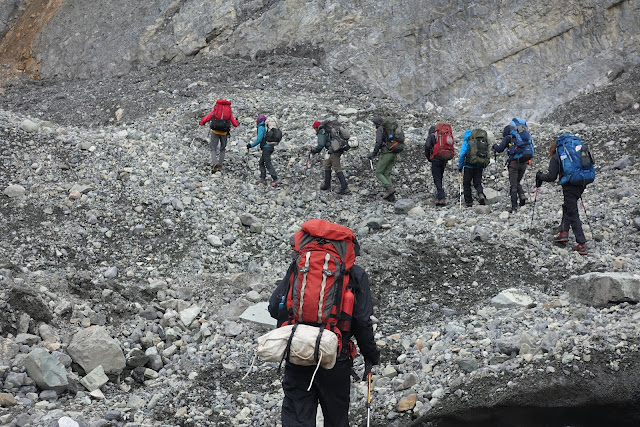
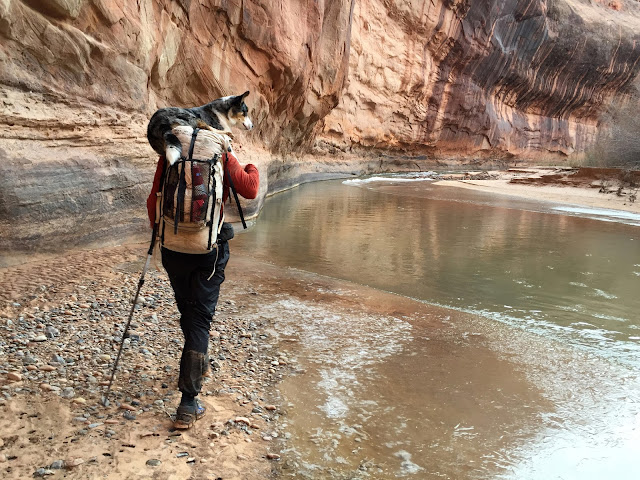
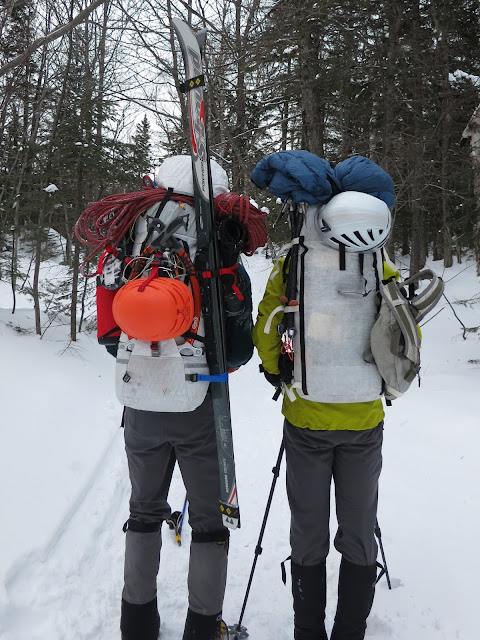







0 comments:
Post a Comment